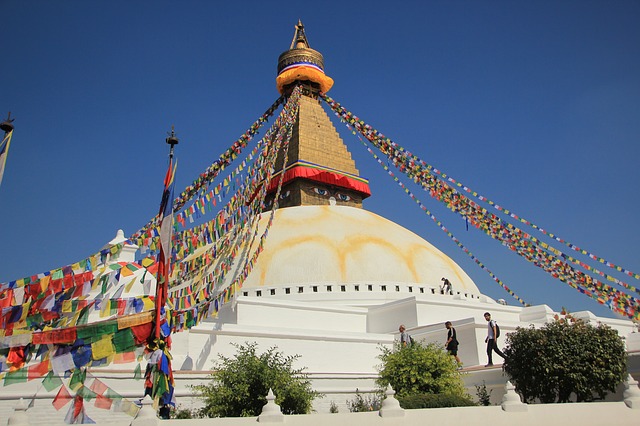Economy

Nepal’s gross domestic product (GDP) for 2018 was estimated at $28.8 billion. With an annual growth rate calculated at 6.3% in 2018, and expected to reach 7.1% in 2019, Nepal is one of the fastest growing economies in the world. However, the country ranks 165th in the world in nominal GDP per capita and 162nd in GDP per capita at PPP. Nepal has been a member of WTO since April 23, 2004.
The 16.8-million-worker Nepali labor force is the 37th largest in the world. The primary sector makes up 27.59% of the GDP, the secondary sector 14.6%, and the tertiary sector 57.81%. Nepal’s foreign exchange remittances of US$8.1 billion in 2018, the 19th largest in the world and constituting 28.0% of GDP, were contributed to its economy by millions of workers primarily in India, the middle east and East Asia, almost all of them unskilled laborers. Major agricultural products include grain (barley, maize, millet, paddy and wheat), oilseed, potato, pulses, sugarcane, jute, tobacco, milk and water buffalo meat. Major industries include tourism, carpets, textiles, cigarettes, cement, brick, as well as small rice, jute, sugar and oilseed mills. Nepal’s international trade greatly expanded in 1951 with the establishment of democracy; liberalization began in 1985 and picked up its pace after 1990. By the fiscal year 2016/17, Nepal’s foreign trade amounted to Rs 1.06 trillion, a twenty-three folds increase from Rs 45.6 billion in 1990/91. More than 60% of Nepal’s trade is with India. Major exports include readymade garments, carpet, pulses, handicrafts, leather, medicinal herbs, and paper products, which account for 90% of the total. Major imports include various finished and semi-finished goods, raw materials, machinery and equipment, chemical fertilizers, electrical and electronic devices, petroleum products, gold, and readymade garments. Inflation was at 4.5% in 2019. Foreign exchange reserves were at US$9.5 billion in July 2019, equivalent to 7.8 months of imports.
Pokhara (pictured) is one of the premier tourist destinations. Nepal has a significant potential for the development of ecological, cultural and spiritual tourism.
Nepal has made significant progress in poverty reduction bringing the population below the international poverty line (US$1.90 per person per day) from 15% in 2010 to just 9.3% in 2018, although vulnerability remains extremely high, with almost 32% of the population living on between US$1.90 and US$3.20 per person per day. Nepal has made improvements in sectors like nutrition, child mortality, electricity, improved flooring and assets. Under the current trend, Nepal is expected to eradicate poverty within 20 years. The agriculture sector is particularly vulnerable as it is highly dependent on the monsoon rains, with just 28% of the arable land being irrigated, As of 2014. Agriculture employs 76% of the workforce, services 18%, and manufacturing and craft-based industry 6%. Private investment, consumption, tourism and agriculture are the principal contributors to economic growth.
The government’s budget is about $13.71 billion (FY 2019/20); expenditure of infrastructure development budget, most of it contributed by foreign aid, usually fails to meet the target. The country receives foreign aid from the UK, India, Japan, the US, the EU, China, Switzerland, and Scandinavian countries. The Nepali rupee has been tied to the Indian rupee at an exchange rate of 1.6 for many years. Per capita income is $1,004. The distribution of wealth among the Nepalis is consistent with that in many developed and developing countries: the highest 10% of households control 39.1% of the national wealth and the lowest 10% control only 2.6%. European Union (EU) (46.13%), the US (17.4%), and Germany (7.1%) are its main export partners; they mainly buy Nepali ready-made garments (RMG). Nepal’s import partners include India (47.5%), the United Arab Emirates (11.2%), China (10.7%), Saudi Arabia (4.9%), and Singapore (4%).
Besides having landlocked, rugged geography, few tangible natural resources and poor infrastructure, the ineffective post-1950 government and the long-running civil war are also factors in stunting the country’s economic growth and development. Debt bondage even involving debtors’ children has been a persistent social problem in the western hills and the Terai, with an estimated 234,600 people or 0.82% of the population considered as enslaved, by The Global Slavery Index in 2016.


